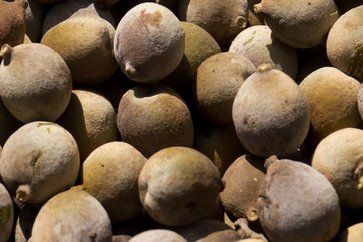Amla: The Ultimate Guide to Its Benefits and Uses
Amla, or Indian Gooseberry, is a vital component of Ayurvedic medicine, revered for its holistic health benefits. This unassuming fruit is a powerhouse of nutrients and possesses a unique balance of flavors – sweet, sour, bitter, astringent, and pungent – making it a well-rounded addition to any diet.
Ayurveda harnesses Amla’s therapeutic potential in various formulations to improve digestion, strengthen immunity, nourish the skin, and promote hair health. Its cooling properties help counter inflammation, a key principle in Ayurvedic healing.
Often referred to as “Amalaki” or “Dhatri,” meaning “mother” or “nourisher,” Amla is a versatile ingredient found in powders, tonics, and herbal blends.
Beyond physical well-being, Ayurveda recognizes Amla’s role in mental and spiritual harmony. This ancient wisdom views it as a potent tool for balancing the body and mind, promoting overall health and vitality.
What is Amla?
Amla, often termed a ‘divyaushada’ or divine medicine, is celebrated for its profound health benefits and revered status in Ayurvedic tradition.
This small, green fruit is distinguished by its unique composition of five distinct tastes—sweet, sour, bitter, astringent, and pungent. Each taste plays a role in balancing the doshas (vata, pitta, and kapha), contributing to overall well-being.
Nutrient Present In Amla
Amla’s healing potential knows no bounds, thanks to its abundant reserve of essential nutrients. This unassuming fruit is brimming with a wealth of vital elements that contribute to its remarkable health benefits.
From bolstering immunity to enhancing skin health, amla’s nutrient-rich composition makes it a true nutritional treasure trove.
1. Vitamin C: The Immunity Booster: Amla is renowned for its extraordinarily high vitamin C content. This potent antioxidant not only aids in boosting the immune system but also plays a pivotal role in collagen synthesis, contributing to healthy skin, strong bones, and efficient wound healing.
2. Calcium and Iron: Building Blocks of Strength: Calcium and iron, both crucial minerals, are present in amla in meaningful quantities. Calcium supports bone health and teeth integrity, while iron helps transport oxygen through the blood, preventing anemia and promoting overall vitality.
3. Phosphorous: Strengthening the Framework: Phosphorous is integral to the formation of healthy bones and teeth, aiding in energy production, and supporting the efficient functioning of cells and tissues.
4. Carotene and Vitamin B: Nurturing Wellness: Amla’s carotene content, a precursor to vitamin A, contributes to good vision, skin health, and immune function. Meanwhile, its vitamin B components play diverse roles in metabolism, energy production, and nerve function, promoting overall well-being.
5. Protein and Fiber: Sustaining Vitality: The presence of protein and fiber in amla is noteworthy. Protein is essential for muscle growth and repair, hormone production, and enzymatic functions. Fiber, on the other hand, aids in digestion, promotes satiety, and maintains healthy cholesterol levels.
Ayurvedic Properties of Amla
In Ayurveda, the ancient system of medicine from India, amla (Indian gooseberry) is highly valued for its extensive therapeutic properties.
Its use spans various aspects of health and wellness due to its ability to balance the three doshas (vata, pitta, and kapha) and support overall well-being. Here’s a detailed look at amla’s Ayurvedic properties:
Taste (Rasa):
- Sour (Amla): The predominant taste of amla is sour, which influences its effects on the body. Sour foods are generally known to stimulate digestion and boost metabolism.
Energy (Virya):
- Cooling (Shita): Despite its sour taste, amla has a cooling effect on the body. This cooling quality helps to pacify excessive pitta (heat) and can be beneficial in conditions associated with inflammation and heat.
Post-Digestive Effect (Vipaka):
- Sweet (Madhura): After digestion, amla has a sweet post-digestive effect, which is soothing and nurturing. This property helps in balancing the doshas and provides nourishment to the tissues.
Effect on Doshas:
- Balances Pitta: Amla is particularly effective in pacifying pitta dosha, which is associated with heat, inflammation, and acidity. It helps reduce symptoms related to excess pitta, such as irritability, indigestion, and inflammation.
- Balances Vata: It also helps in balancing vata dosha, which governs movement and dryness in the body. Its hydrating and nourishing properties can help soothe vata imbalances like dryness, constipation, and anxiety.
- Balances Kapha: Amla has a light and dry quality, which can help balance kapha dosha, which is characterized by heaviness and sluggishness. It aids in digestion and can help in managing excess kapha-related conditions like obesity and sinus congestion.
Primary Actions (Guna):
- Laghu (Light): Amla is considered light, which makes it easy to digest and beneficial for enhancing metabolic processes.
- Ruksha (Dry): It has a drying effect, which helps to counteract excess moisture and mucous in the body.
Religious Significance of Amla Fruit in India
Amla, or Indian gooseberry, is deeply revered in India not only for its extensive health benefits but also for its rich religious and cultural significance. Here’s a closer look at its multifaceted role:
Religious Significance
1. Offerings to Lord Shiva:
During the Hindu month of Kartik (October-November), amla is offered to Lord Shiva as part of various rituals.
This period is considered auspicious, and offerings made to deities are believed to bring blessings and purify the soul. Amla, with its purifying properties and health benefits, is seen as a fitting offering to the divine.
2. Symbolism of Purity and Renewal:
In Hinduism, amla symbolizes purity and renewal. It is believed that consuming amla and offering it during Kartik helps in spiritual cleansing and rejuvenation.
The fruit’s ability to balance the three doshas (vata, kapha, and pitta) in Ayurveda is seen as a reflection of its ability to harmonize and purify both body and spirit.
Cultural Uses Of Amla Fruit
Ritual Use: Beyond its use in offerings, amla is incorporated into various traditional practices and remedies. It is often used in the preparation of herbal concoctions, beauty treatments, and dietary supplements, reflecting its integral role in daily life and cultural rituals.
Festivals and Rituals: During religious festivals and specific rituals, amla is used to make offerings, perform ceremonies, and create sacred spaces. Its inclusion in these practices underscores its esteemed status in spiritual and cultural contexts.
Common Name of Amla
Amla, also known as Indian gooseberry, goes by various names in different languages, highlighting its widespread recognition and importance. Let’s explore the diverse names that this remarkable fruit is known by:
In Sanskrit
1. Amalki: This name reflects the fruit’s inherent goodness and nourishing properties, as “Amalki” translates to “nectar of life.”
2. Shriphala: “Shriphala” signifies the fruit’s auspicious nature, as “Shri” often conveys prosperity and blessings.
3. Sheetaphala: “Sheetaphala” alludes to the fruit’s cooling effects on the body, making it a valuable choice in hot climates.
4. Dhatri: As the “Dhatri” or caretaker of health, amla’s various benefits are well-captured in this name.
5. Tishyaphala: This name underscores the intense potency and therapeutic qualities of amla, making it a source of overall well-being.
Indian Names of Amla
Amla, known for its rich nutritional profile and medicinal benefits, is recognized by various names around the world, reflecting its widespread use and significance in different cultures. Here are some of the names for amla in various languages and regions:
Names in Different Languages
- English: Indian Gooseberry
- Hindi: (Amla)
- Sanskrit: (Amla)
- Bengali: (Amla)
- Tamil: (Nelli)
- Telugu:(Adraksha) or (Nedu)
- Kannada: (Huralikayi)
- Malayalam: (Ammala) or (Puliyanti)
- Marathi: (Amla)
- Gujarati: (Amla)
- Punjabi: (Amla)
- Urdu: (Amla)
- Nepali: (Amla)
- Assamese: (Amla)
- Odia: (Amla)
- Arabic:(Amla)
International Names
- Latin: Phyllanthus emblica (scientific name)
- French: Groseille de l’Inde
- Spanish: Grosella india
- German: Indische Stachelbeere
- Italian: Uva spina indiana
- Chinese (Mandarin): (Yìndù cùlì)
- Japanese: (Indian gūzuberrī)
- Korean: (Indo guseuberi)
These names reflect the fruit’s global recognition and its integration into various cultures and traditional practices. Whether in health food markets or traditional medicine, amla is appreciated worldwide for its health benefits and versatility.
Benefits Of Eating Raw Amla
Eating raw amla (Indian gooseberry) offers a multitude of health benefits, making it a valuable addition to a balanced diet. Here’s a closer look at how raw amla can enhance your health:
1. Boosting Immunity Naturally
Amla is renowned for its exceptionally high vitamin C content, which is essential for a robust immune system. Vitamin C enhances the production and function of white blood cells, which help combat infections and diseases.
The antioxidants in amla neutralize harmful free radicals, reducing oxidative stress and lowering the risk of chronic illnesses.
2. Aiding Digestion and Metabolism
Raw amla is a good source of dietary fiber, which supports digestive health by promoting regular bowel movements and preventing constipation.
The compounds in amla help stimulate digestive enzymes and improve metabolic processes, potentially aiding in weight management and overall digestive efficiency.
3. Glowing Skin and Healthy Hair
The antioxidants in amla help fight oxidative damage, which can reduce signs of aging such as wrinkles and fine lines. Vitamin C also supports collagen production, essential for maintaining skin elasticity and texture.
Amla oil is widely used for hair care due to its nourishing properties. It strengthens hair follicles, reduces dandruff, and enhances shine, while the nutrients in raw amla support healthy hair growth.
4. Managing Blood Sugar Levels
Research indicates that amla may help regulate blood sugar levels by improving insulin sensitivity and reducing inflammation. This makes it a beneficial addition to the diet for managing diabetes and maintaining stable blood sugar levels.
5. Heart Health
The antioxidants in amla help mitigate oxidative stress, which is linked to heart disease. Regular consumption can aid in maintaining healthy cholesterol levels and supporting proper blood circulation.
6. Enhancing Vision
High levels of vitamin C in amla can help reduce the risk of eye conditions such as age-related macular degeneration and cataracts. It contributes to maintaining healthy eyes and clear vision.
7. Strengthening Hair
Consuming raw amla provides essential nutrients that support hair health. It can help reduce hair fall, strengthen hair roots, and promote growth, contributing to thicker and healthier hair.
8. Natural Detoxification
Amla supports liver health, which is crucial for detoxification processes. Its diuretic properties help flush out toxins from the body, promoting overall cleansing and detoxification.
9. Bone Health
Amla contains minerals like calcium and phosphorus, which are vital for maintaining strong bones and teeth. These nutrients help prevent bone-related conditions such as osteoporosis.
Incorporating raw amla into your diet can be a powerful way to leverage its diverse health benefits.
Whether consumed directly or used in various culinary preparations, its nutritional profile makes it an excellent choice for enhancing overall well-being.
Amla Products and Recommended Dosages
The Ayurvedic dosages for various Amla variants differ based on their forms. Here are the recommended dosages for different Amla products:
1. Powder: Consume half a teaspoon of Amla powder with lukewarm water. Frequency: Twice a day.
2. Capsule: Take 1 to 2 Amla capsules with a sufficient amount of water after meals. Frequency: Twice a day.
3. Tablet: Consume 1 to 2 Amla tablets with an ample amount of water after meals. Frequency: Twice a day.
4. Candy: Enjoy 1 to 3 Amla candies after your meals.
5. Juice: Take 3 to 4 teaspoons of Amla Juice before your meals. Frequency: Twice a day.
FAQs About Amla
1. Can I consume amla if I have a sensitive stomach?
Absolutely! Amla is gentle on the stomach and can actually aid digestion for many people.
2. Is it better to eat raw amla or consume it in another form?
Both forms have benefits, but eating raw amla ensures you get the maximum nutrients without any processing.
3. How can I incorporate raw amla into my diet?
You can eat it as is, add it to salads, make amla juice, or even mix powdered amla into your smoothies.
4. Are there any side effects of consuming too much amla?
While amla is generally safe, excessive consumption might lead to digestive discomfort or interact with certain medications.
5. Can raw amla help in weight loss?
Yes, the fiber content in amla can promote satiety and support weight management efforts. Incorporating raw amla into your diet can be a game-changer for your overall health and well-being.
From boosting your immune system to promoting glowing skin, healthy hair, and strong bones, the benefits of consuming this nutrient-rich fruit are undeniable.
References:
- Functional and Nutraceutical Significance of Amla (Phyllanthus emblica L.): A Review(1)
- Clinical Study to Evaluate the Efficacy and Safety of a Hair Serum Product in Healthy Adult Male and Female Volunteers with Hair Fall(2)
- Phyllanthus emblica (Amla) Fruit Powder as a Supplement to Improve Preweaning Dairy Calves’ Health: Effect on Antioxidant Capacity, Immune Response, and Gut Bacterial Diversity(3)
- Evaluation of the effects of a standardized aqueous extract of Phyllanthus emblica fruits on endothelial dysfunction, oxidative stress, systemic inflammation and lipid profile in subjects with metabolic syndrome: a randomised, double blind, placebo controlled clinical study(4)
























